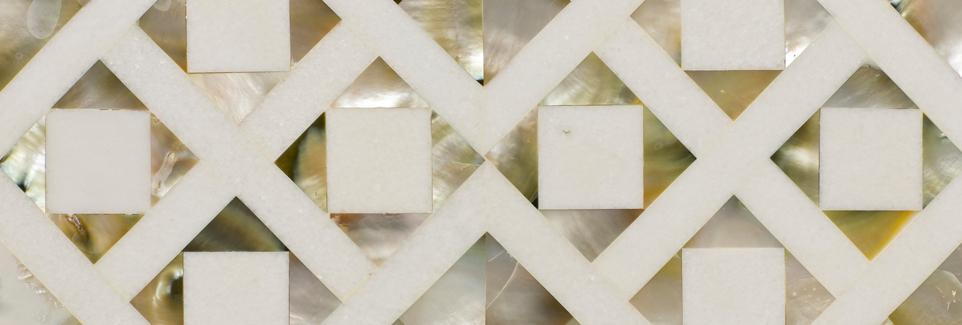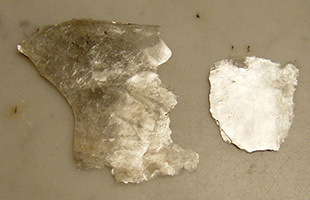












All are monoclinic with a tendency towards pseudo-hexagonal crystals and are similar in chemical composition. The highly perfect cleavage, which is the most prominent characteristic of mica, is explained by the hexagonal sheet-like arrangement of its atoms.
The word "mica" is thought to be derived from the Latin word micare, for glitteren, in reference to the brilliant appearance of this mineral (especially when in small scales). The mica has a lamellar from with shiney lusture.
Occurrence
Mica output in 2005In 2005, India has the largest deposits of mica in world. China was the top producer of mica with almost one-third global share closely followed by the USA, South Korea and Canada, reports the British Geological Survey.
Mica is widely distributed and occur in igneous, metamorphic and sedimentary regimes. Large crystals of mica used for various applications are typically mined from granitic pegmatites.
Until the 19th century, large crystals of mica were quite rare and expensive as a result of the limited supply in Europe. However, its price dramatically dropped when large reserves were found and mined in Africa and South America since early 19th century.
Scrap and flake mica is produced all over the world. The flake mica comes from several sources: the metamorphic rock called schist as a by-product of processing feldspar and kaolin resources, from placer deposits, and from pegmatites. Sheet mica is considerably less abundant than flake and scrap mica. Sheet mica is occasionally recovered from mining scrap and flake mica. The most important sources of sheet mica are the pegmatite deposits.
Mica in Ancient times
Human use of mica dates back to pre-historic times, and mica was known to ancient Egyptian, Greek and Roman civilizations, Chinese civilization, as well as the Aztec civilization of the New World.
The earliest use of mica has been found in cave paintings created during the Upper Paleolithic period (40,000 BC to 10,000 BC), The first colors were red, iron oxide (hematite, a form of red ochre) and black (manganese dioxide), though black from juniper or pine carbons has also been discovered. White from kaolin or mica was used occasionally.
A few kilometeres northeast of Mexico City stands the ancient site of Teotihuacan. The most striking visual and striking structure of Teotihuacan is the towering pyramid of the sun. The pyramid contained considerable locally mined mica in layers up to one foot thick.
Through out the ages, fine powders of mica have been used for various purposes, including decorative purposes. The coloured Gulal and Abeer used by Hindus of north India during holi festival contain fine small crystals of mica. The majestic Padmanabhapuram palace, Padmanabhapuram, 65 km from Trivandrum, India, has coloured mica windows.
The medieval Chinese mechanical engineer, horologist, pharmacologist, and statesman Su Song (1020-1101 AD) of the Song Dynasty outlined in his book Ben Cao Tu Jing the medicinal properties and uses of the then every known type of mica (which was 8 in all, refer to article on mineralogy).
By Appointment
DE FERRANTI
South Park Studios - Suite 10
88 Peterborough Road, London SW6 3HH
United Kingdom